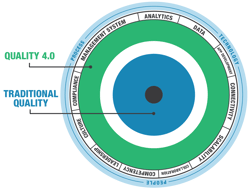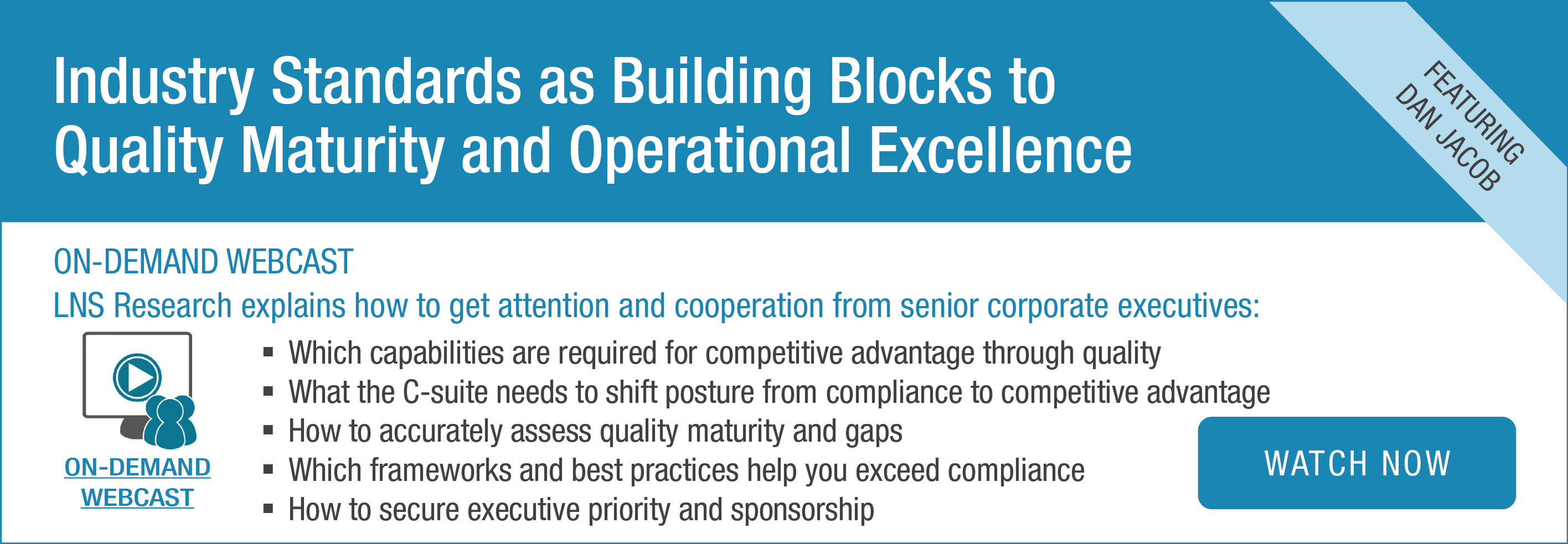“Sustainable change, after all, depends not upon compliance with external mandates or blind adherence to regulation, but rather upon the pursuit of the greater good.” – Douglas B Reeves, American educator.
Quality leaders would agree with this sentiment. While compliance will always be a significant factor in quality management, leaders are now focusing on building a culture of quality, encouraging defect prevention in addition to correction, designing in quality, and driving customer satisfaction.
Click here to speak with Dan Jacob
However, for many, progress remains slow. LNS Research data shows that according to 36% of the market, the top challenge in achieving quality objectives is that organizations view quality as a department versus a cross-functional responsibility (n=1328).
One area where quality leaders must improve is the approach to compliance updates. They have inherently communicated updates as compliance events. However, if approached correctly, compliance updates can be a powerful force to advance quality strategy.
There are eight things quality leaders should consider when they face (yet another) compliance update.
Consideration #1 | Recognize Compelling Events
A compelling event is an event that has a business impact, an economic buyer, and a set timeframe. All compliance events meet these criteria. They have a business impact, either due to fines or inability to sell in specific markets. They have an economic buyer, who is either in the C-suite, a regional business owner, a customer relationship manager, or a product line owner. There is a set timeframe.
In this light, compliance updates are business events with financial repercussions. Learn the impact of compliance events on business and its different functions.
Consideration #2 | Re-examine the Definition of Quality
What should quality mean to your organization? LNS has proposed the following description: “Quality is the conformance to customer expectations”. It's a good definition that positions quality for the future and helps guide strategy and prioritization.
Consideration #3 | Build Your Quality Strategy
Understand the current state of your people, processes, and technology – ideally by site – including what is working and what isn’t. Identify where you want to go, and what needs to happen to get there. LNS recommends using the definition of quality plus a maturity model to help guide this transformation plan.
Consideration #4 | Resolve Quality Management Challenges
Top three quality management challenges across the market are “disparate systems and data sources,” “ineffective quality metrics,” and “quality is a department versus a cross-functional solution.” Any strategy to address these three areas will require a shift to centralized quality data, metric and information-driven decisions, and a culture where quality information is shared across functions.
Consideration #5 | Look Up and Out
Look up: study your company's strategic objectives and any strategic initiatives and align these with the business event (compliance update) and your proposed quality strategy. Look out: understand the objectives, initiatives, and KPIs of your peers and again, align them with your strategy. This is an iterative process that needs to be updated as needed to ensure corporate success.

Consideration #6 | Get Educated on Quality 4.0
Quality 4.0 is the next generation of quality management. It incorporates new connectivity, data, analytics, apps, and collaboration to traditional quality people, processes, and technology. It is highly likely that your organization has a digital transformation initiative underway, and if that is the case, one of the key expected outcomes will be improved quality.
Consideration #7 | Reposition
With the plan and compelling event details in hand, we can now reposition a compliance event in its proper context as both a business event and an enabler of a broader quality strategy, that improves corporate and peer success. The target audience should include top management, and the outcome should be a champion or a sponsor in senior management who provides sustained support.
Consideration #8 | Get the Handshake
Success will require quality to meet peers and top management in middle. As we work on building a culture of quality, the quality function needs to deliver against its new definition and become a leader rather than merely executing.
How do we modify process roles and responsibilities? Should the organization be rebalanced to include more resources aligned to development? How should systems be connected? Watch the webcast to learn more about using compliance updates to improve quality management.
